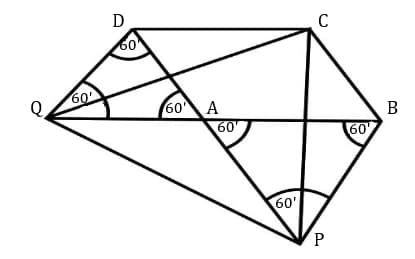Kesab Chandra Nag Solutions for Exercise 1: EXERCISE-1
Kesab Chandra Nag Mathematics Solutions for Exercise - Kesab Chandra Nag Solutions for Exercise 1: EXERCISE-1
Attempt the practice questions from Exercise 1: EXERCISE-1 with hints and solutions to strengthen your understanding. MATHEMATICS CLASS 9 solutions are prepared by Experienced Embibe Experts.
Questions from Kesab Chandra Nag Solutions for Exercise 1: EXERCISE-1 with Hints & Solutions
and are the midpoints of and respectively of . The straight line is extended to the point such that . Prove that is a parallelogram.
The diagonals of the square intersect each other at . Let is constructed. Prove that .
In the quadrilateral and . Prove that the quadrilateral is an isosceles trapezium.
is a quadrilateral. Two parallelograms and are constructed. Prove that and bisects each other equally.
and are the midpoints of and of the parallelogram . Prove that is a parallelogram.
The points and are on the sides and respectively of the rectangle , such that . Prove that is a parallelogram.
Two squares and are constructed on the sides and respectively of the parallelogram on the outside of . Prove that is isosceles.
of the parallelogram is an obtuse angle. Two equilateral triangles and are constructed on the sides and on the outside of . Prove that is an equilateral triangle.

